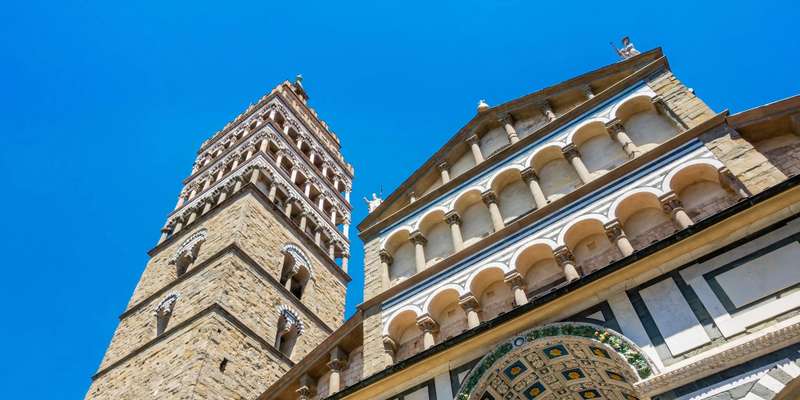- Home
- Useful Tips
- Pistoia's best kept secret: the...
Most travelers to Tuscany rush past Pistoia unaware of its breathtaking Sant'Andrea Church, missing one of Italy's finest examples of Romanesque architecture. Over 85% of visitors to the region concentrate on Florence and Pisa, creating overcrowding while hidden treasures like Sant'Andrea remain peacefully accessible. The frustration of battling tourist crowds when quieter, equally magnificent alternatives exist just minutes away is a common pain point for thoughtful travelers. This 12th-century masterpiece houses Giovanni Pisano's pulpit - considered his crowning achievement - yet receives a fraction of the visitors plaguing more famous sites. Those who do discover Sant'Andrea often arrive at inconvenient times, missing the perfect morning light that illuminates its striped marble facade or the tranquil hours when they can properly appreciate its artistic details without distraction.


Why Sant'Andrea Church gets overlooked (and why that's your advantage)
Sant'Andrea's under-the-radar status stems from Pistoia's reputation as a 'stopover' city rather than a destination, despite being just 30 minutes from Florence by train. Many guidebooks dedicate mere paragraphs to this architectural marvel while spending pages on crowded Florentine churches. The church's modest exterior also deceives visitors - its true wonders reveal themselves inside, where Pisano's sculpted biblical scenes come alive with startling emotion. Locals know the secret: arriving before 10am lets you experience the striped marble interior awash with golden light, creating an almost mystical atmosphere. Unlike major cathedrals requiring timed tickets, Sant'Andrea welcomes spontaneous visits, though checking the liturgical schedule ensures you avoid mass times when tourism access may be limited.
Decoding Sant'Andrea's must-see details (like a Pistoia art historian)
The pulpit dominates attention, but true connoisseurs follow a specific viewing sequence. Start with the facade's 13th-century lunette depicting the Journey of the Magi, then move clockwise to observe how the striped marble patterns change with the daylight. Inside, Giovanni Pisano's pulpit deserves at least 15 minutes of study - notice how the 'Massacre of the Innocents' panel conveys movement through drapery folds, a revolutionary technique for 1301. The nearby St. Andrew statue holds a secret: its polished feet result from centuries of devotees touching them for blessings. Local guides often whisper that the church's orientation causes winter solstice light to perfectly frame the apse mosaic at noon, a detail even most Italians miss.
Smart visiting strategies to enhance your experience
Midweek mornings between April-June offer ideal conditions: pleasant temperatures, soft lighting through the clerestory windows, and few visitors. Summer afternoons can be stifling as the stone interior retains heat. Savvy travelers combine their visit with Pistoia's weekly Wednesday/Saturday market in Piazza della Sala, just a 5-minute stroll away, creating a perfect cultural morning. Don't make the common mistake of rushing - the church's quiet corners reveal hidden fresco fragments and medieval graffiti. Photography enthusiasts should bring a wide-angle lens for the pulpit shots and arrive by 9:30am to capture the facade's east-facing details in optimal light. Remember the dress code: while less enforced than in Florence, modest attire (covered shoulders/knees) shows respect in this active place of worship.
Beyond the church: crafting your perfect Pistoia day
Sant'Andrea anchors Pistoia's 'via dei musei' (museum street), allowing seamless visits to the adjacent Palazzo Fabroni contemporary art space and Civic Museum's medieval collections. For lunch, locals favor Osteria dello Stilnovo, where truffle pasta pairs perfectly with stories about Pistoia's medieval rivalries with Florence. The nearby Baptistery offers a fascinating contrast to Sant'Andrea with its Gothic proportions and 14th-century frescoes. Those driving can extend their day to the Medici Fortress of Santa Barbara for panoramic views, or the nearby Padule di Fucecchio wetlands for evening birdwatching. Evening visitors should check the church's concert schedule - hearing Gregorian chant beneath Pisano's pulpit under candlelight is an unforgettable experience few tourists ever enjoy.
